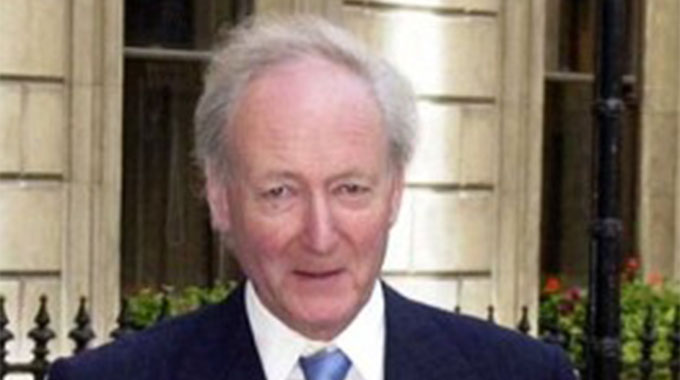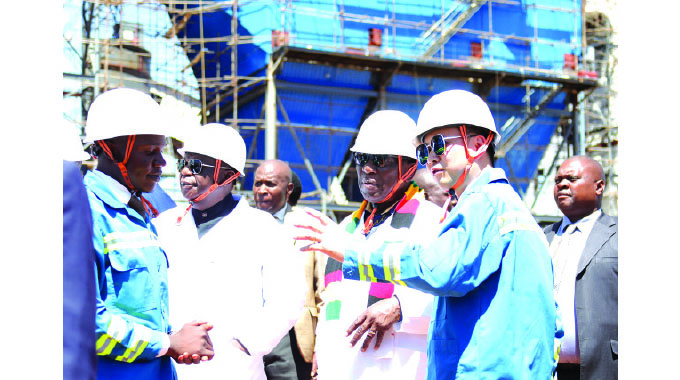Reflections on township tourism

Beaven Dhliwayo Features Writer
For a long time, Zimbabwe’s tourism has been largely wildlife-driven, and considering the ever-changing tourist preferences, coupled with increased competition from regional and global suppliers, the country needs to urgently diversify its tourism resource to remain a competitive destination.
The United Nations World Tourism Organisation (UNWTO) is on record saying it is high time the country promotes township tourism as it has emerged as the fastest growing tourist activity in Africa.
Township tourism presents an untapped market that has enormous potential to boost revenue inflows.
The Ministry of Environment, Tourism and Hospitality Industry and the Zimbabwe Tourism Authority (ZTA) initiated the concept of township tourism in 2012, but few players have dared to grab the opportunity and offer such a service.
Township tourism has the potential to grow the tourism sector in Zimbabwe and augment the existing tourism products.
For instance, townships in Harare have a lot of potential attractions that can be harnessed for urban township tourism, including buildings and places of historical significance, culture, markets, socialisation areas, arts and crafts.
Zimbabwe’s tourism industry can most likely be rejuvenated through township tourism, particularly in some of the popular suburbs like Mbare, Highfield, Epworth, Waterfalls and Warren Park.
Townships can offer attractions and services of touristic value, which include places of political and historical significance, cultural, vibrant socialisation and outdoor places.
Township tourism can be understood as a form of creative tourism which brings out the uniqueness of destinations by focusing on a host culture and the creativity of the township communities.
Notable is that the most important stakeholders in township tourism are the local people, as the whole concept of creative tourism revolves around them (Chugh, 2018).
Township lifestyles and culture have been observed to have great potential because of their ability to provide engaging experiences to visitors.
Last week, the Zimbabwe Tourism Authority (ZTA) held a stakeholder workshop in Mbare in a bid to unlock potential of tourism within the community.
Addressing stakeholders, ZTA chief operating officer Givemore Chidzidzi said township tourism presents an unexploited market that has massive potential to boost revenue inflows.
“Mbare has been a destination for a lot of international visitors because of its history and favourable cultural attributes such as its arts and crafts centres.
“Township tourism is unique to Africa as tourists from the developed world are seeking urban spaces with a rich human history that is rarely found in other parts of the world,” said Chidzidzi.
Drawing examples from the widely visited townships of South Africa’s famous Soweto, the local urban landscape is not different from its southern neighbour.
If managed well, township tourism in the country can bring results and promote sustainable development in marginalised areas.
Year-in-year-out, tourists make time to visit Soweto where they indulge in the ghetto cuisines and appreciate artwork.
With guided tours of international tourists within the townships in Johannesburg and Cape Town, township tourism has become a well-selling product among tour operators.
Township tours in South Africa emerged after 1994, when townships as places of political conflicts initially attracted visitors who were interested in South Africa’s democratic transition.
In South Africa, tour operators bring visitors to the sites of significance to the anti-apartheid movement as well as of historically oppressed communities.
Apart from the breathtaking scenery at Table Mountains and safari drives at Kruger National Park, township tourism has become one of the main sources of revenue in neighbouring South Africa.
Soweto’s Vilakazi Street is a hive of activity, with the street dotted with several restaurants and hugely important historical sites that include the home of former president Nelson Mandela.
In 2001, the first restaurant, Sakhumzi Restaurant, opened in the famous street.
To date, there are a total of 10 restaurants in the street and they employ over 800 people.
It’s an inspiring story that Zimbabwe can emulate and revive township tourism, which will subsequently empower locals.
For a long time, there has been stigma around Zimbabwe’s townships, but township tours, given that they are organised in a safe and informative way, can help to overcome stereotypes of township life and people.
Mbare has attractions for urban township tourism in form of vibrant markets.
It has the largest fruit and vegetable market and also there is “Magaba”, meaning metal tins, which is a market place for affordable metal work and other craftsmanship such as cooking pots, cups, bathing basins, carpentry work and even coffins.
Mbare also has the curio market, which is the Mbare’s most famous attraction, the largest market for traditional artwork, including soapstone sculpture and mbira instruments.
There is the Stodart Hall, a place of vigil for deceased national heroes and the Mai Musodzi Hall, one of Harare’s oldest theatre centres, named after one of the pioneer women who spent most of her time educating other women.
These places, if refurbished, can attract many tourists from developed countries because of their rich human history.
This will create employment for locals and generate the much-needed foreign currency which tourists will bring with them into the country.
Highfield also has Mushandirapamwe Hotel, where freedom fighters held several of their meetings as they planned the execution of the liberation struggle, as well as Cyril Jennings Hall, where historic underground mobilisation exercises took place during the armed struggle.
Other socialisation areas that are a potential for township tourism include Mereki in Warren Park and Zindoga in Waterfalls among others, which are outdoor places popular for braais.
At these places, tourists can have an opportunity of consuming food and beverages that are consumed by locals at these socialisation areas.
Attractions also include the National Heroes Acre in Warren Park, where national heroes are laid to rest.
Launched in October 2012 amid pomp and fanfare in Highfield, township tourism has failed to attract noteworthy visitors.
At the core of the challenges raised by Mbare residents at the recently held township tourism workshop is the historic spatial-planning deficiencies, which continue to hinder the expansion of the tourism destination to its full potential.
These include inadequate public facilities like ablutions, parking, street furniture, pedestrian walkways and bicycle lanes.
The congested public transport routes in the area also need to be tackled.
The immediate concern for many is safety and the crime rate within the precinct, with reported syndicates targeting tourists and the situation is exacerbated by illegal tour guides and parking attendants hustling in the precinct.
ZTA should develop Mbare as a pilot model for township tourism in the country.
Rampant crime, heavily-congested infrastructure, erratic supply of water and electricity, potential attractions being demolished or closed and a lack of a framework for sustainable urban township tourism pose a series of critical challenges for tourism development.
Despite the effects in regard to townships perception from outside, effects on the local economy are also significant.
There is, thus, need for improvements in infrastructure, amenities and safety and suitable security measures should be put in place.
Tourism players should be innovative in creating township tours that provide unique visitor experiences for township tourism to be a success in Zimbabwe.
There is need for thorough research on township tourism development and learning from countries such as South Africa where meaningful profits have been realised from tours.
Tour operators should come up with exciting tour packages that can entice people to come to the townships, the itinerary should be able to link urban townships with other attractions in and around Harare.
Zimbabwe should be guided by its national tourism policy in its developmental efforts, at the same time adhering to legal requirements to develop urban township tourism.
There is need for robust stakeholder engagement.
Key stakeholders should be educated on township tourism, its importance to the economy to ensure meaningful participation at all levels.
Sustainable tourism cannot be successfully implemented without the direct support and involvement of communities affected by it.
Funding should be availed for various projects, including rehabilitation of road networks linking the townships.
The infrastructure at Mbare generally requires upgrading such as renovation of buildings, revolution of social services, including improvement in water and electricity supply, construction of more appealing attractions such as museums and cultural villages, recreational and sporting facilities.
There is need for adequate safety and security in urban townships to ensure successful urban township tourism development.
Additionally, there is no need to reinvent the wheel in as far as township tourism is concerned.
The Soweto model gives the locals plenty of lessons on how to operate profitably sustainable township tourism businesses.







Comments